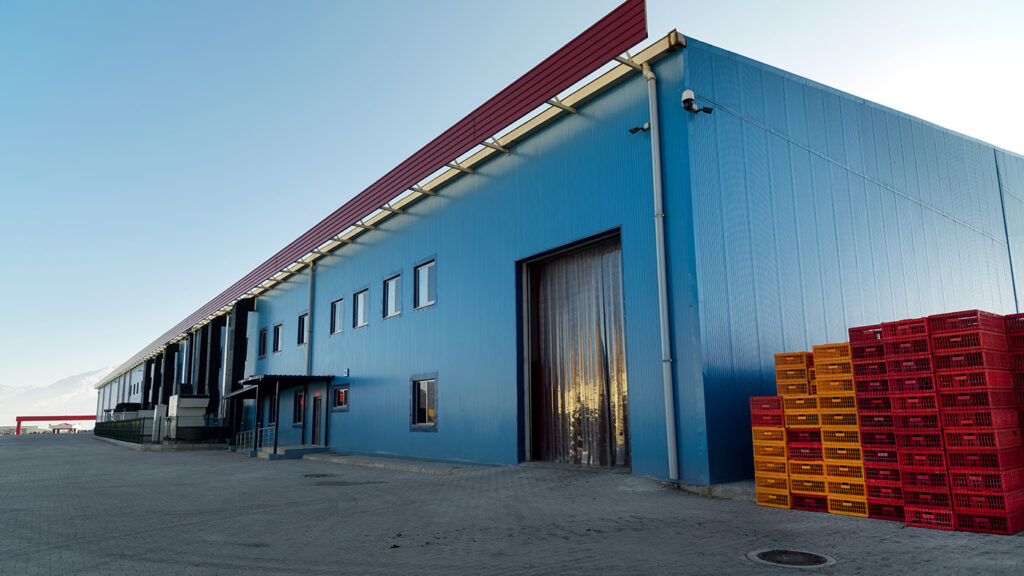During Colliers’ 2023 National Industrial Conference, a panel of cold storage industry experts, including Rick Kingery, Senior Vice President, Leader of Food & Beverage Group at Colliers; Adam Schwank, Director at AEW Capital Management; Randy Thompson, Vice President at Ryan Companies; and Scott McGarity, Executive Vice President at Barber Properties, provided valuable insights into the industry’s ongoing transformation.
Cold storage real estate is experiencing remarkable growth, with a projected annual increase of 13.2% through 2030, propelling it into a $95 billion market. This surge in demand is primarily driven by evolving consumer preferences and the surge in services like meal kit delivery and online grocery shopping, a trend amplified by the COVID-19 pandemic.
The Need for New Cold Storage Facilities
One of the primary challenges in the cold storage real estate market is the lack of supply. The average age of existing cold storage buildings is 37 years, emphasizing the need for new construction and retrofitting of existing facilities. Historically, developers have been hesitant to engage in speculative cold storage construction due to its high costs. However, the increasing demand and elevated rents have now piqued the interest of developers, leading to more speculative construction.
Specialized Requirements and Costs
Constructing cold storage buildings is significantly more expensive than building regular ambient structures, often costing twice as much. Each user has unique specialized requirements based on the products they store or manufacture. For example, an ice cream manufacturer with high-fat content products requires storage facilities as cold as -20 degrees, while other products can be stored in higher temperature zones. Tailored building designs are essential to meet these diverse needs.
Taller Freezer Facilities
There is a growing trend towards constructing taller freezer facilities, with some frozen storage units reaching up to 50 feet in clear height. Surprisingly, taller freezers are more energy-efficient, despite the conventional wisdom that heat rises. The increased cubic volume and the number of pallet positions offered by modern facilities contribute to operational savings and improved efficiencies.
The Challenge of Conversion
One significant challenge in the cold storage real estate market is the specialized nature of these buildings. They are difficult to convert for other uses in the future, posing an additional risk to developers and owners. However, the increasing demand for cold storage means that speculative construction will likely continue to meet the needs of various users.
Supply and Demand Dynamics
Cold storage users tend to cluster around ports, manufacturing hubs, and areas with high consumer density. Each geographic area specializes in storing particular products, such as animal proteins, fruits, vegetables, and dairy. Developers must carefully consider the market they are entering and design buildings accordingly.
Automation and Changing Consumer Preferences
Automation in cold storage facilities is on the rise, with some fully automated buildings replacing the volume of several grocery stores. Additionally, consumer preferences are influencing building designs, with a shift towards accommodating products that require lower temperatures, like ice creams with higher fat content.
Investment and Financing
The financial landscape of cold storage real estate has evolved. Historically, investors expected a 150 to 250 basis point spread above ambient warehouse cap rates to account for the higher risks. However, this spread has shrunk to almost zero. Underwriting the exit remains a challenge, with developers using today’s cap rates to project future exits.
The Future of Cold Storage Real Estate
Looking ahead, third-party logistics providers (3PLs) are expected to take a significant share of new leasing and ownership in the coming years. More developers are likely to sell a portion of their land to specialists in cold storage construction to reduce risk and foster collaboration. The United States cold storage real estate transformation is being driven by changing consumer preferences, increased demand, and technological advancements. While challenges like specialized requirements, high construction costs, and limited conversion options persist, the market’s growth prospects remain robust. As the demand for cold storage continues to rise, speculative construction is expected to play a pivotal role in meeting the diverse needs of users. Cold storage real estate is a hot investment opportunity for those willing to embrace its unique challenges and opportunities.

 Troy Skibitsky
Troy Skibitsky

 Baily Datres
Baily Datres Mike Otillio
Mike Otillio
 Jesse Tollison
Jesse Tollison
 Patrich Jett
Patrich Jett